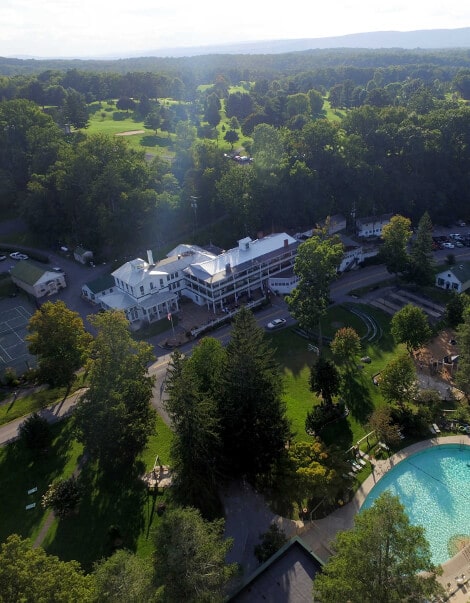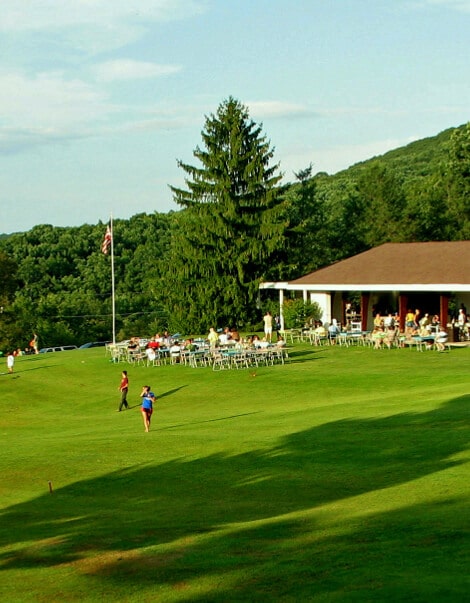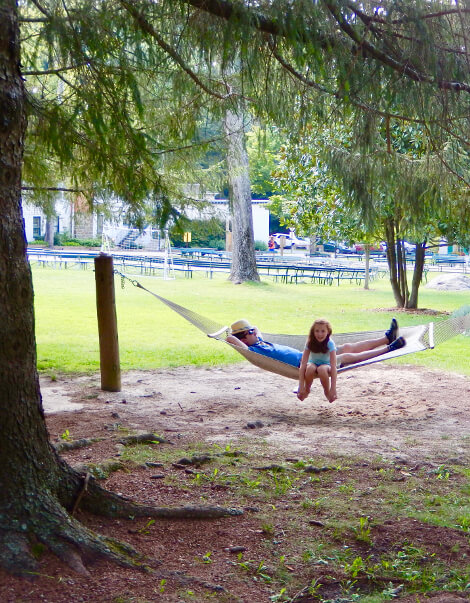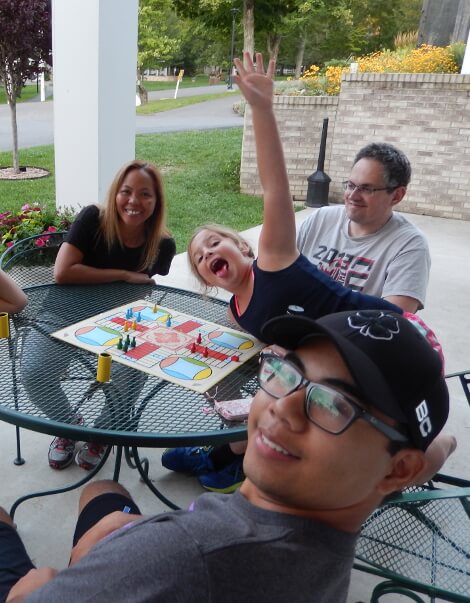The 2024 Season runs May 2 through Nov 9 Summer openings
Capon Through the Decades
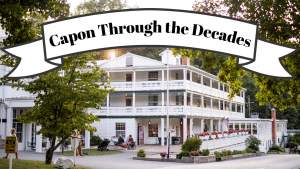 As a way to celebrate our 90th Anniversary season, we will be sharing short Capon history notes in a series we are calling, “Capon Through the Decades.” Each Thursday we will be adding notable events from each decade as we lead up to our opening weekend on, Thursday, April 28! This series will be the “Cliff Notes” version of how Capon Springs and Farms came to be!
As a way to celebrate our 90th Anniversary season, we will be sharing short Capon history notes in a series we are calling, “Capon Through the Decades.” Each Thursday we will be adding notable events from each decade as we lead up to our opening weekend on, Thursday, April 28! This series will be the “Cliff Notes” version of how Capon Springs and Farms came to be!
First a special note… We want to recognize that there is a very rich history of this land and of the people who have resided here that stretches back long before Capon Springs and Farms came into being. We are highlighting our own 90-year chapter in this blog post, but the history of the chapters that came before us ~ from the Native Americans, to the early European settlers, to the city travelers who came here seeking healing and relief from pain, to the families who have resided in the Capon Hollow for generations ~ are all vital to the legacy of this special place.
Capon Through the Decades
Because the story of Capon Springs and Farms as we know it today really begins with Lou Austin entering the water business before purchasing the resort property in the 1930s, our first segment of “Capon Through the Decades” begins in the 1920s…
The 1920s:
- Lou Austin was introduced to the owner of the Capon Spring by his boss and good friend, who was a department head of Philadelphia city services.
- Because he was so impressed with the water, Lou Austin, with a group of friends, raised $100,000 in capital to start a water distribution company– half of the money was for a 50-year contract, half was for plant and equipment.
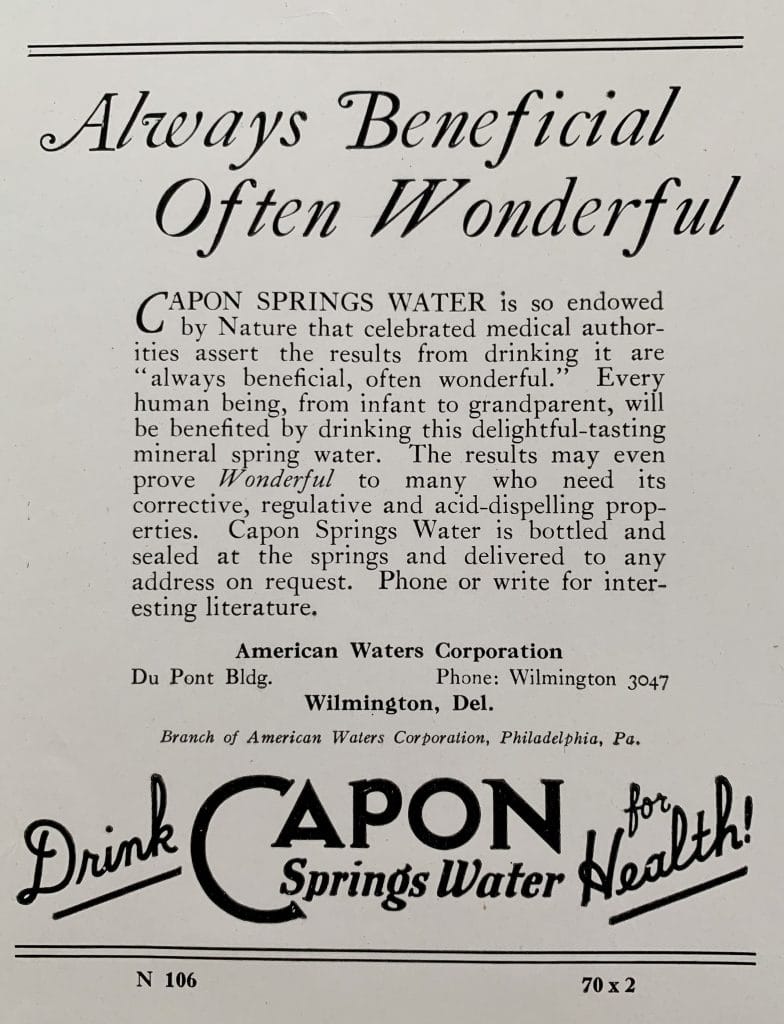
Capon Water Ad from the 1920s
- The 1924 US Olympic teams trained exclusively with Capon water. Four years later, the US team benefited from Capon water even more when the president of the US Olympic committee, Douglas McArthur, authorized it to be shipped overseas so the athletes could drink it up to the day of competition.
- However, around the same time period, under pressure from the American Medical Association, both the FDA and local health departments began to crack down on bottled water companies whose labels and advertisements claimed to possess healing qualities. Bottled Capon water came under scrutiny as being both misbranded and polluted.
- In 1928 federal and state authorities together entered Lou Austin’s Philadelphia warehouse on a liquor warrant (during Prohibition) seizing the most recent freight car shipment to stop distribution in an attempt to close his business. Though several independent laboratories verified the water was pure, the FDA continued to pursue legal action to protect the public by shutting down all bottled water businesses.
- The court cases lasted for almost 4 years and ended in Lou Austin’s favor when, after multiple appeals by the FDA, the Supreme Court, based on expert physician testimony, refused to hear the case.
The 1930s:
- Lou Austin won legal battles in favor of the water in 1931, but still had to convince bond holders not to foreclose before he could secure the majority of the shares.
- The Capon Spring, along with most of the abandoned resort, was purchased by Lou Austin on the county courthouse steps in Romney, WV on July 9, 1932. Lou Austin expanded water distribution to 25 major cities later that year, but was unable to secure a contract for D.C.
- Construction of the golf course began in 1934.
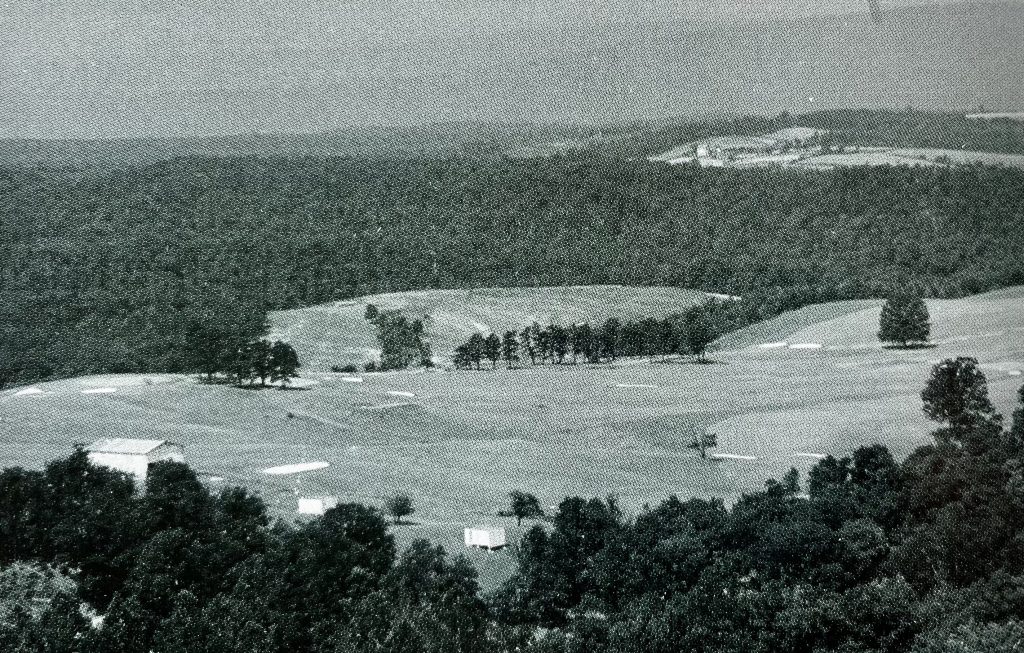 Golf Course photo from before 1939
Golf Course photo from before 1939
- In 1935, the Federal Trade Commission and the American Medical Association, along with local health departments, were still trying to shut down the water business. Lou Austin expanded the product line made with Capon water to include sodas, flavored ice, clays for skin care products and beer (spurred on by the ending of prohibition of alcohol production and consumption).
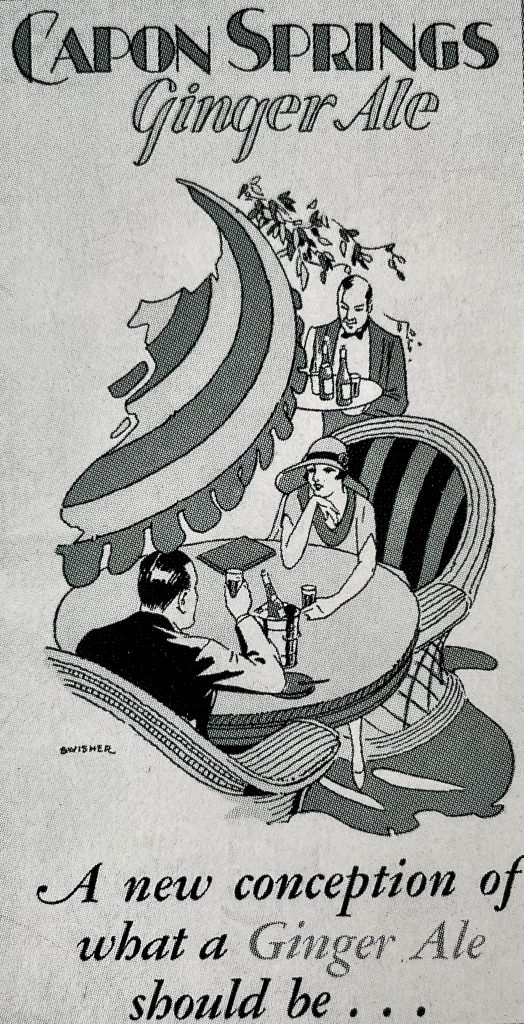 Capon Ginger Ale ad from the 1930s
Capon Ginger Ale ad from the 1930s
- In 1935, Lou Austin made regular trips into the Capon pool in the winter and had his first massage at the Penn Athletic Club, which may have sparked his dream to open a spa at Capon.
- Lou Austin became friends with President FDR’s son James, who helped him 1) meet New York City water distributers, 2) introduce the idea of making Capon the president’s “summer home,” 3) set up a lunch meeting with his mother Eleanor on December 7, 1937, 4) develop the idea of the Roosevelt Foundation where people doing good works for others would come and get rejuvenated at Capon.
- The campfire began as a nightly activity for guests in the days before electricity. Once electricity became operational in 1937, the campfire moved to its now-traditional spot on Saturday nights.
- Lou Austin purchased the remaining Nelson land holdings.
- On July 3, 1938, Lou Austin shot the golf course record 34 par.
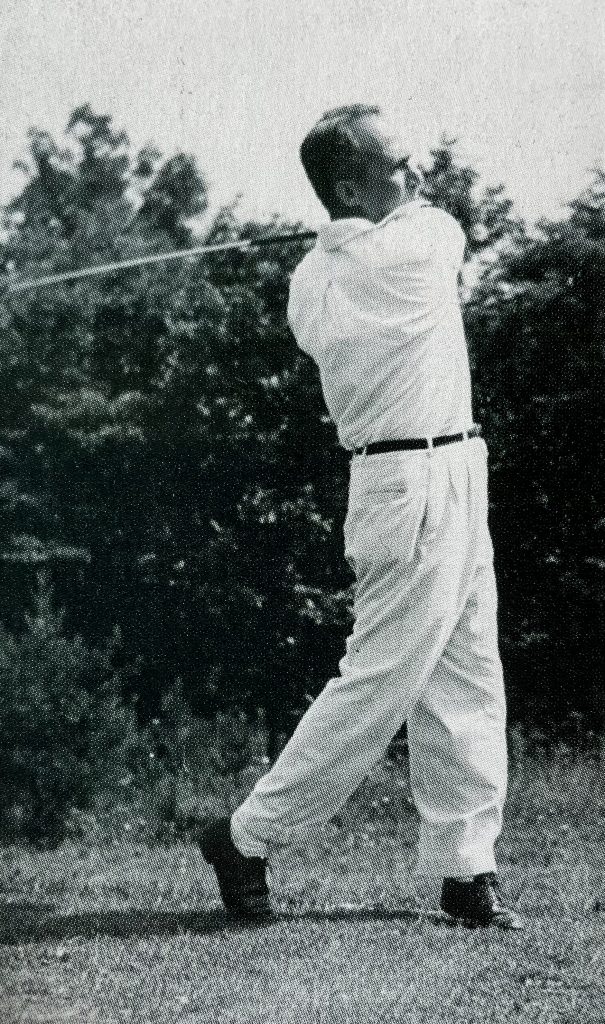 Lou Austin photo from 1930s
Lou Austin photo from 1930s
- The West Virginia Cottage and Pavillion were converted to guest rooms and the dining room was built. The Sunset Lodge was built for outdoor dinners and moonlight dances on the roof.
The 1940s:
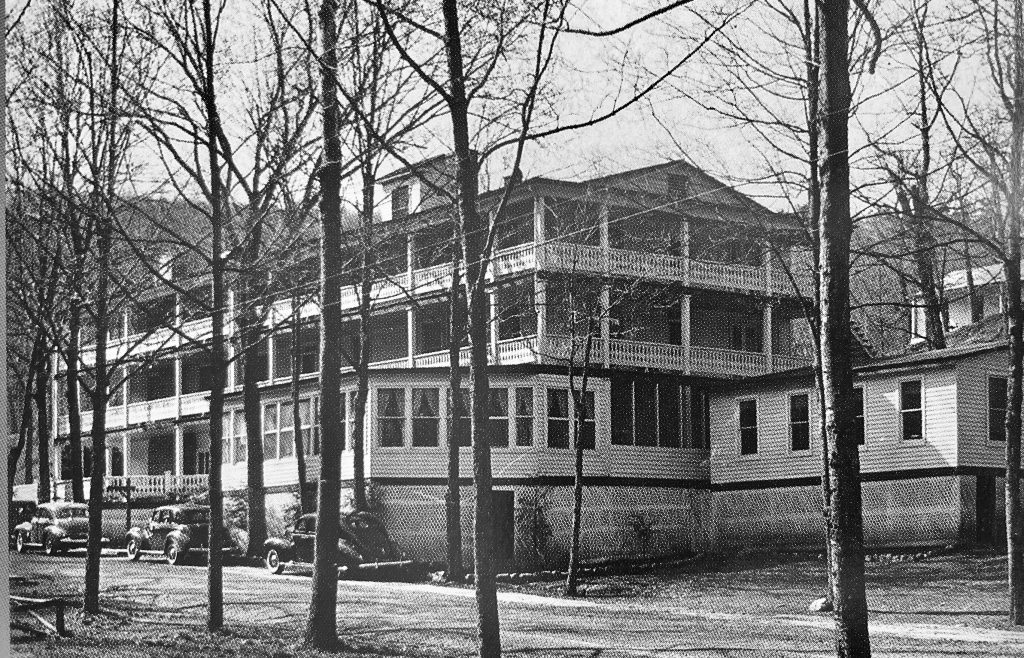
Early 1940s photo of Main House
- In 1940, Lou Austin became inspired by Glenn Clark (of Camps Farthest Out) who brought religion down to a personal level. They developed a personal friendship and Capon began to host CFO retreats at the end of each season, which continue to the present day.
- Lou Austin continued with plans he started in the 1930s to establish a nonprofit foundation, which was finally realized in 1949 with the creation of the Partnership Foundation. Lou Austin spent most of the 1940s writing movie scripts, radio plays, book ideas as well as national proclamations of repentance for peace.
- Throughout the entire 1940s, legal cases against Capon water continued with the persistence of the FDA to shut down all water businesses. Lou Austin got the US Attorney General involved to help his case without success.
- In 1941, Lou Austin experimented with other Capon water products like a flavored ice.
- In 1942, Capon began using an outdoor amplifier to wake guests in the morning with soft music. This tradition continues to the present day.
- 11:00 PM curfew began to ensure that everyone received a good night’s sleep– and to guard against any night-time rowdiness!
- Additional facilities were added with the construction of the Honeymoon Cottage, Play Yard, Library, coal-fired brick bake oven, and Playhouse. Originally, the left section of the Playhouse was open-ended and apple butter was made there. It was later enclosed and became what is now a place for children to play. The right section of the Playhouse was known as the Sports Room and held a miniature bowling alley, and later pinball games and sports equipment.
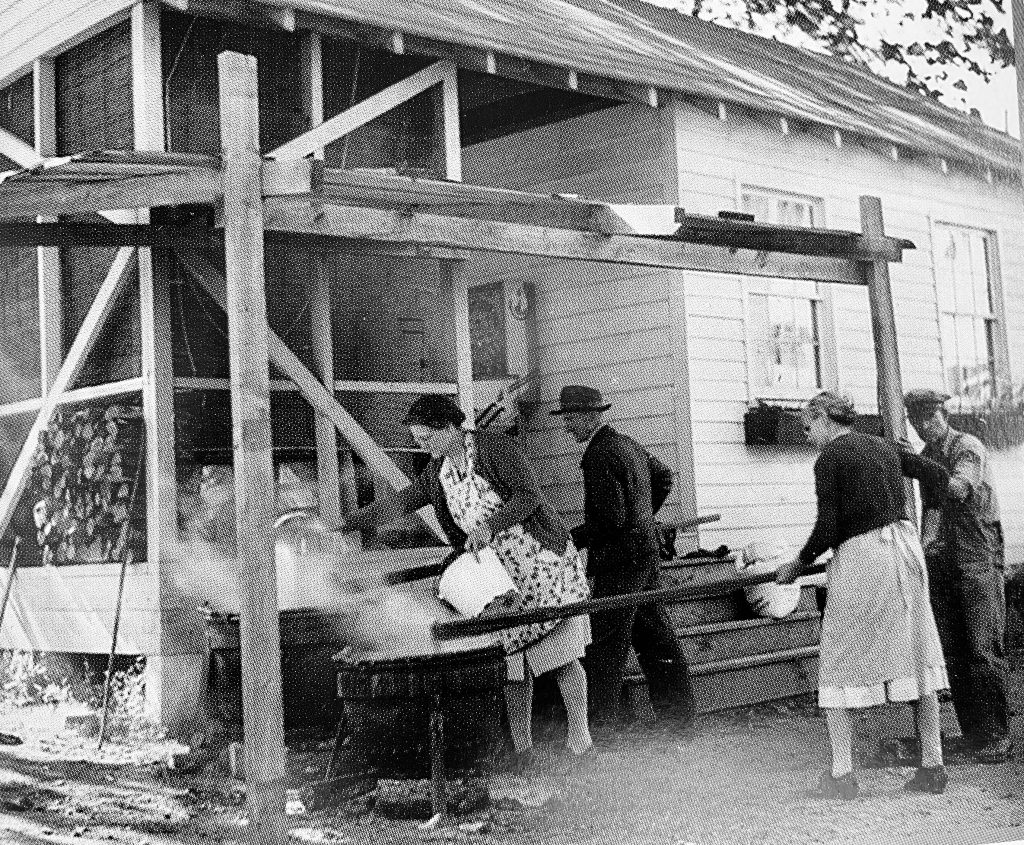
Open-ended Playhouse in 1945. Making apple butter. Left to right, Miss Bessie Walker, Carter Brill, Pearle Kump and Irvan Kump.
- During WWII, Capon’s farms were growing twice as much as usual to help with the war effort. Reservations were up 50-60% with long wait lists to get in, even with a ban on driving and no public buses. Arrangements were made to pick up guests from DC. The pool was decorated with World War II surplus rubber rafts and a long oval pontoon. Lou Austin would give a turkey to anyone who could stay on the pontoon for longer than three seconds!
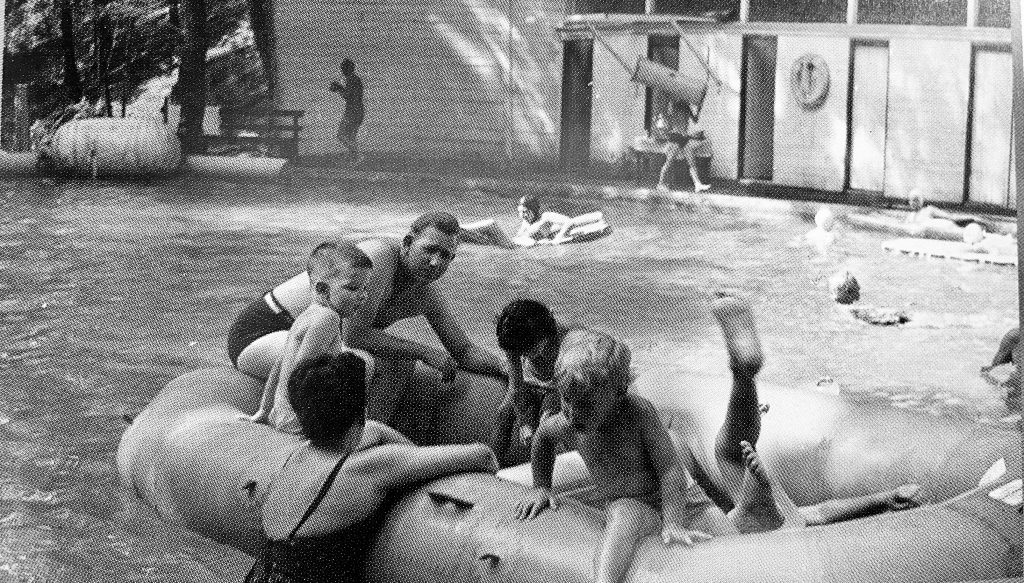
Army surplus raft and “pontoon” (upper left corner). 1940s photo.
The 1950s:
- In 1950, Lou Austin purchased the 2,000 acre Sheetz land tract which includes Eagle Rock
- The “Big Swing” was hung on the old white oak on the lawn
- Golf Course improvements continued, the “Little Course” was added (1954)
- Another addition was built on the Dining Room, a guest laundry room was added
- Through the early 1950s, Capon water was supplied to all US Congressional offices in DC with glowing letters from prominent senators.
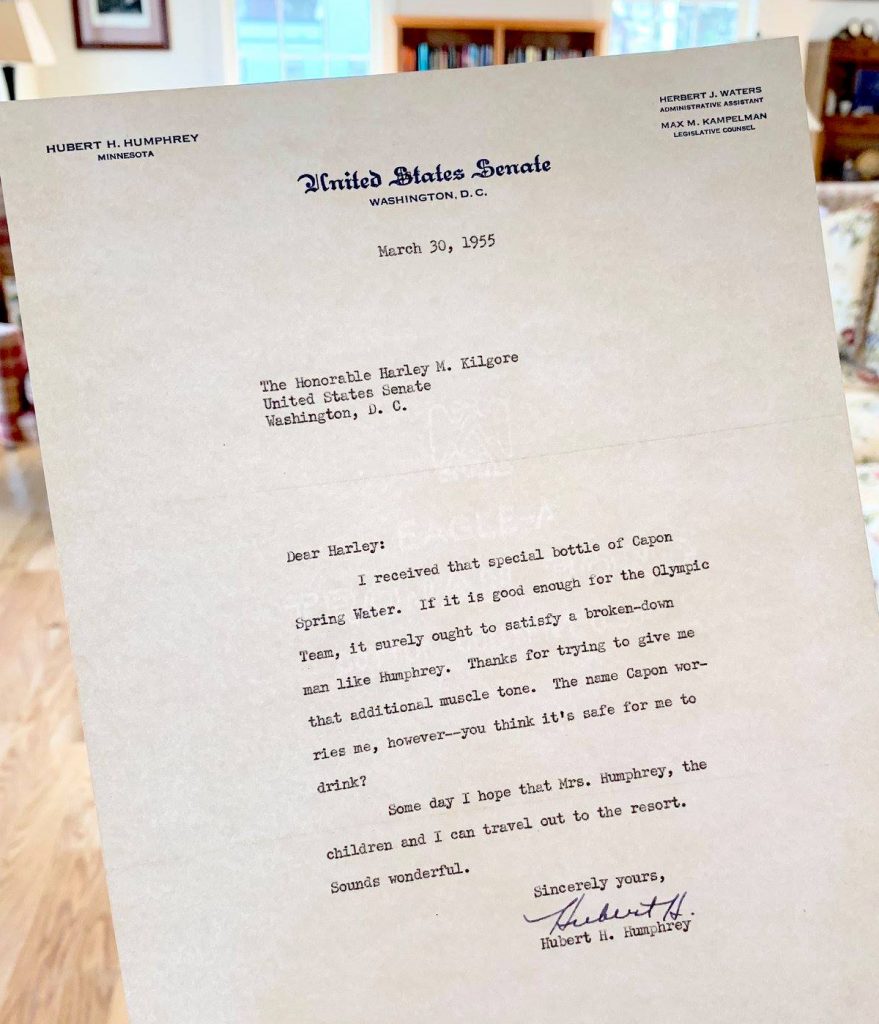
Letter from Senator Hubert Humphrey about Capon water
- Due to unrelenting pressure from the FDA, Lou Austin took Capon water off the commercial market in 1955, making it available just to resort guests and the community.
- Lou Austin was selected to share his philosophy on the “This I Believe” radio program with Edward R. Murrow.
- After Lou Austin established The Partnership Foundation, he self published You Are Greater Than You Know (1955) and The Little Me and the Great Me (1957).
- As Lou Austin spent more time with his writings and the Partnership Foundation, second generation Austin family members began having a more prominent role in Capon’s operations (late 50s-early 60s). Virginia Austin continued to have a heavy presence at Capon, greeting people at the front desk, running the dining room and creating the menus.
- The Meeting House was constructed (1957-1958). Architect and Capon guest Frank Groff designed the Meeting House, styled after the Pavillion.
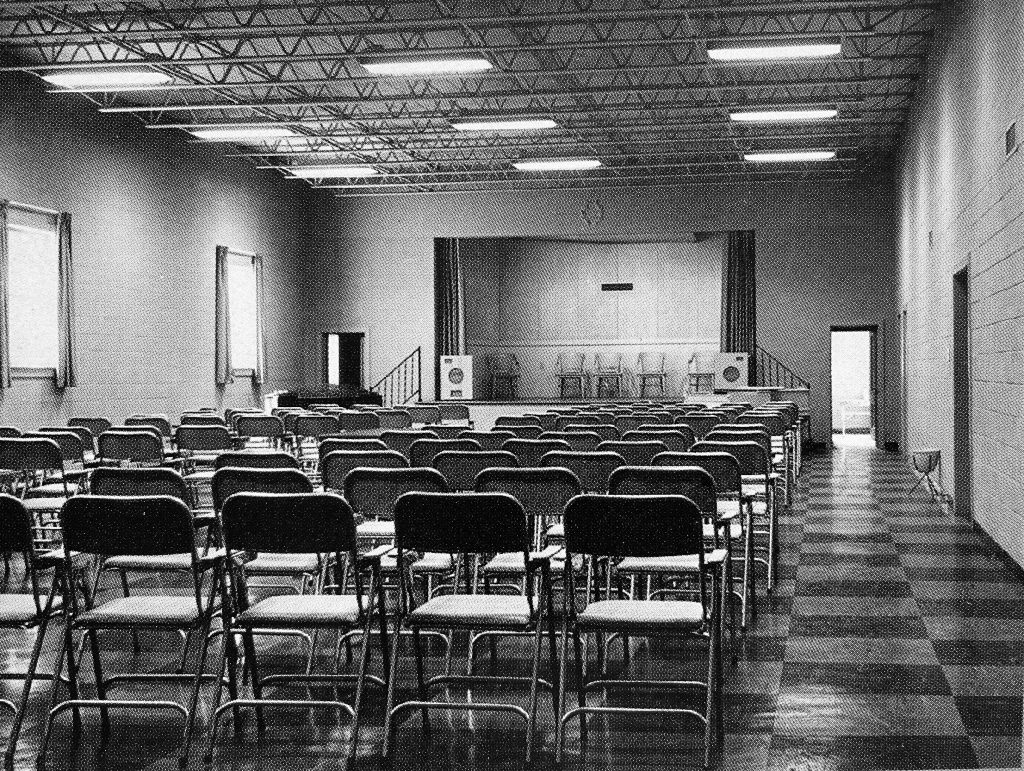
1950s photo of Meeting House Auditorium
- A new sundeck at the Pool required trees being cut down which allowed more sun to shine on the pool and warm the water.
- The Teen-Age Corner was started in the Upper Ping Pong House.
The 1960s:
- The airstrip opened at Capon’s Hilltop Farm and was used by some guests to land their planes for their Capon visit.
- Lou Austin decided he would no longer fight the FDA and instead would offer Capon Water free-of-charge to anyone who wanted it!
- Cottages 1, 2, and 3 were built with the idea that they would be rented for the season or year-round.
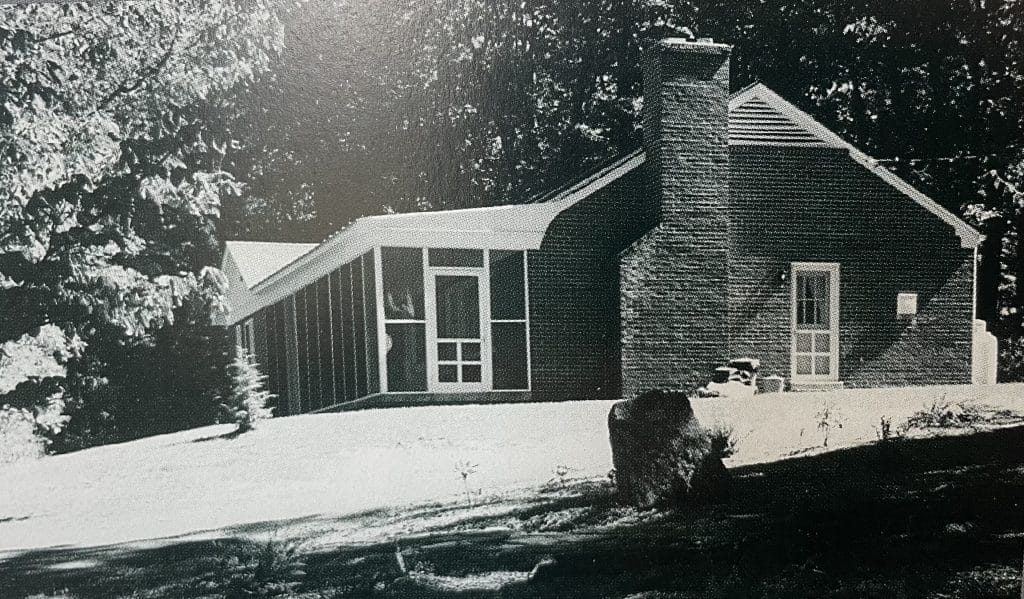
Cottage 1
- Bingo and stereo concerts (for listening enjoyment) began in the Meeting House.
- Lighting was added to the shuffleboard courts for night play and a 3rd wooden court was installed.
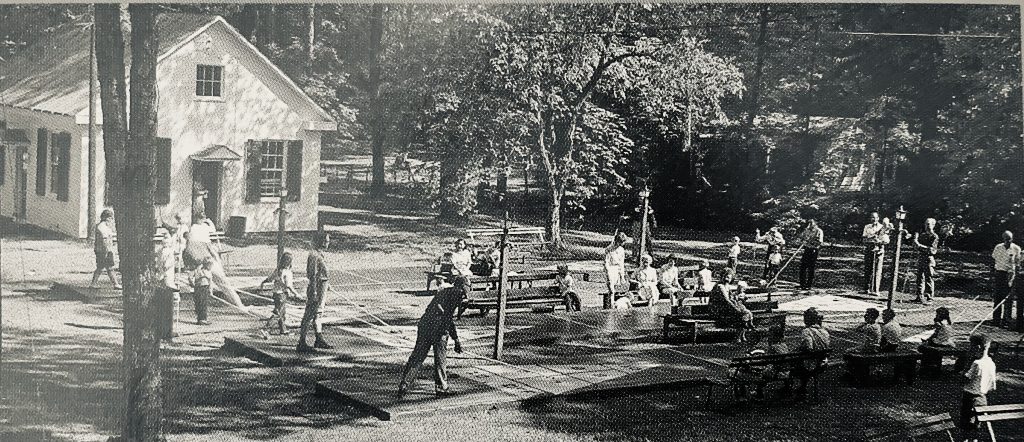
1960s photo of shuffleboard courts
- The lower all-weather tennis court was built in 1966 due to the popularity of tennis at the time.
The 1970s:
- The Fairfax Cottage got an interior renovation.
- Lou Austin passed away in May 1976. He took a swim in the Capon pool every morning before breakfast during the season until a week before his death.
- A new building was constructed to replace the old Sunset Lodge.
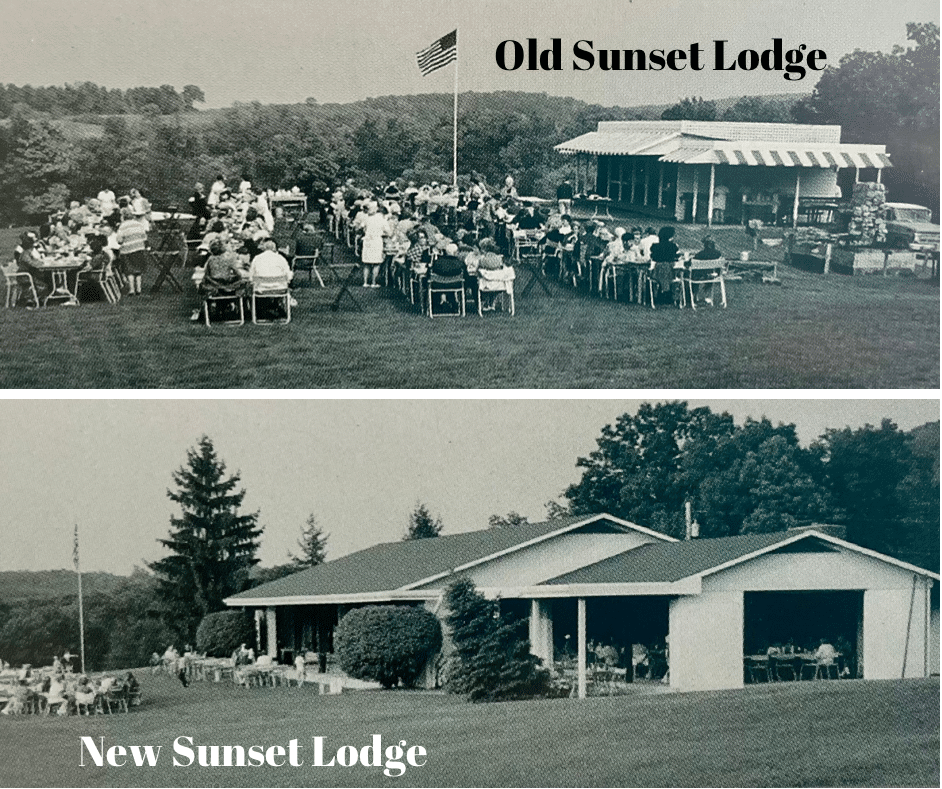
- The upper all-weather tennis court was built in 1974.
- The first two concrete shuffleboard courts were built in 1979.
- Third generation Austin family members began working at Capon alongside the second generation and Virginia Austin who continued her role of greeting guests at the front desk and managing the dining room.
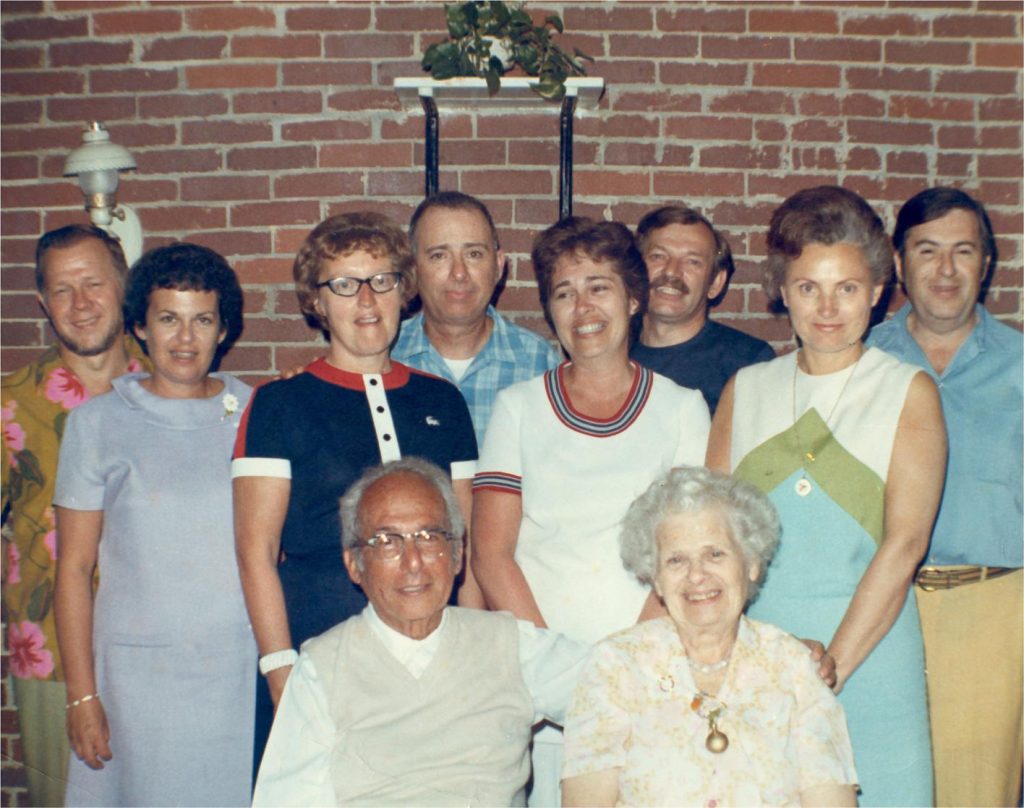 Photo of first and second generations.
Photo of first and second generations.
From left: Harry and Virginia-Lou McKeown, Lyn and Ted Austin,
Claire Kay and Jack Bellingham, Lee and Porter Austin. Seated: Lou and Virginia Austin.
- Pot Luck Best Ball Tournaments began twice weekly.
- The walking trails were improved and the Yellow Trail was blazed.
- Jack Bellingham (Lou and Virginia Austin’s son-in-law) painted the iconic design on the wall in the lower ping pong house.
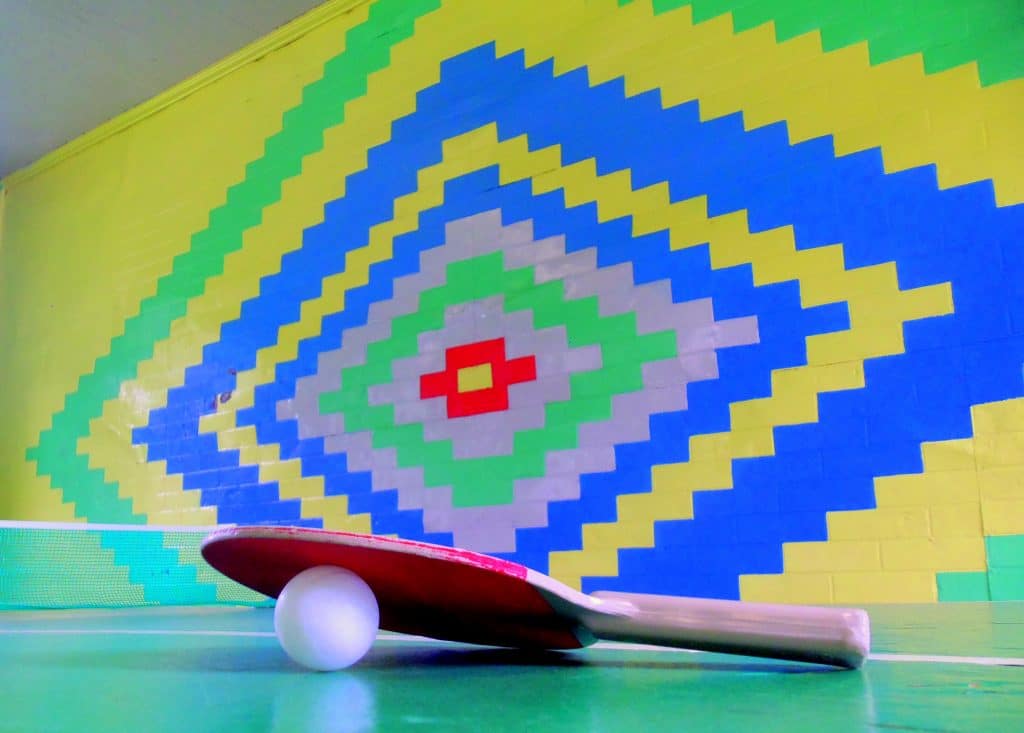
The 1980s:
- The lower clay court was resurfaced with Har-Tru (1980)
- Second generation Austin Family members began to retire
- Virginia Austin died (Jan. 1982)
- “The Capon Cookbook” was first published (1983)
- The Log Cabin was restored (1984 & 1988)
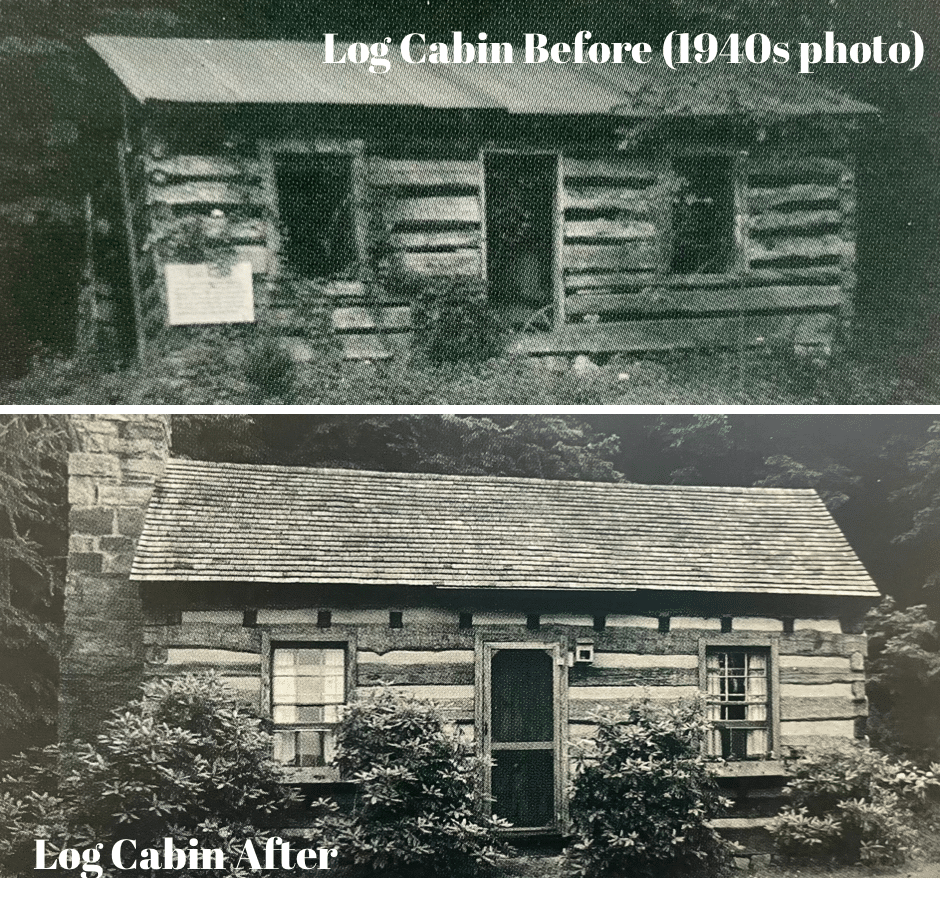
- The Memorial Fountain on the lawn was built
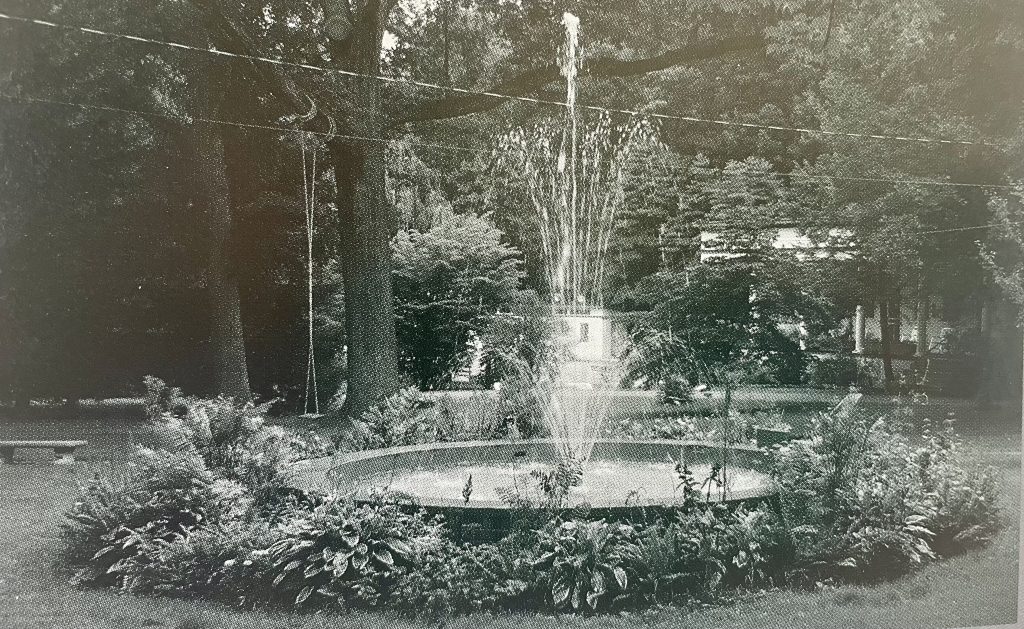 Memorial Fountain
Memorial Fountain
- The Main House Front Porch was resurfaced in stone, replacing the old red quarry tile surface (1985)
- The Apple Butter Kitchen was rebuilt and a second floor was added (1986). The building is used today as it was back then: the upstairs is storage and the lower floor has too rooms, one is used as a canning kitchen and the other has two brick fireplaces built to hold the 40-gallon copper kettles of apple butter.
 Apple Butter Kitchen
Apple Butter Kitchen
- Steak dinner moved from Wednesday night to Thursday night; Lunch on the hill began
- Bathroom was built on the Golf Course (1988)
- Golf pro, Ray Loy, began to give lessons
- The Blue Trail was blazed
- An LLA Anthology was published; edited by Lou Austin’s daughter Claire Kay Austin Bellingham, assisted by other family members
The 1990s:
- Completed renovation to the Virginia Cottage (1990); interior renovation to the Poe (1990); and the Golf Lockerhouse (1994)
 Virginia Cottage renovation in progress
Virginia Cottage renovation in progress
- Dining Room was again expanded, as well as the Back Kitchen, and cellar storage area (1992)
- Bake Shop, Cooking Kitchen and Office and Phone Booth areas were renovated (1994)
- The Front Desk changed from left to right as you enter (1994)
- Fire sprinkler system was installed in the Main House (1991)
- Swimming pool facilities were upgraded: the changing rooms (1996); the concrete deck around the pool (1997)
 Pete Budnyk checking in on pool renovation work in progress
Pete Budnyk checking in on pool renovation work in progress
- Spring and Fall programs were introduced as well as senior and shoulder season rates
- Third generation Austin family members fully took on management responsibilities and fourth generation members began to contribute.
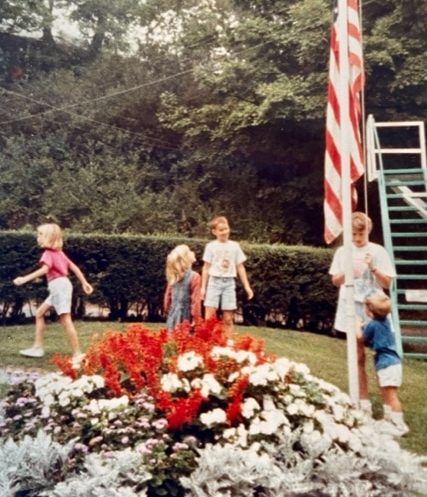 4th generation Austin family members helping with morning “flag duty”
4th generation Austin family members helping with morning “flag duty”
- We received National Historic District status
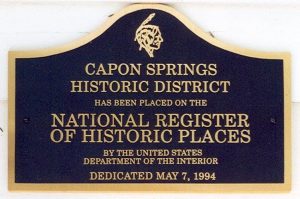
The 2000s:
-The West Virginia Cottage was renovated (2000)
-The Main House 2nd and 3rd floor Men’s and Ladies’ bathrooms were renovated (2001)
-A replica of the original 1880’s Music Pavilion was built on the upper lawn (2001)
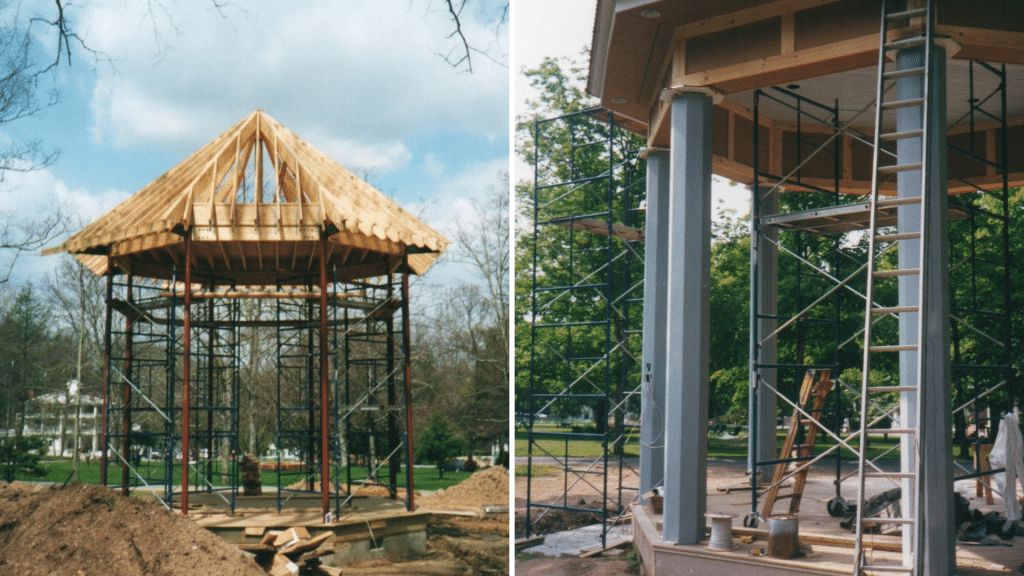 Music Pavilion Under Construction
Music Pavilion Under Construction
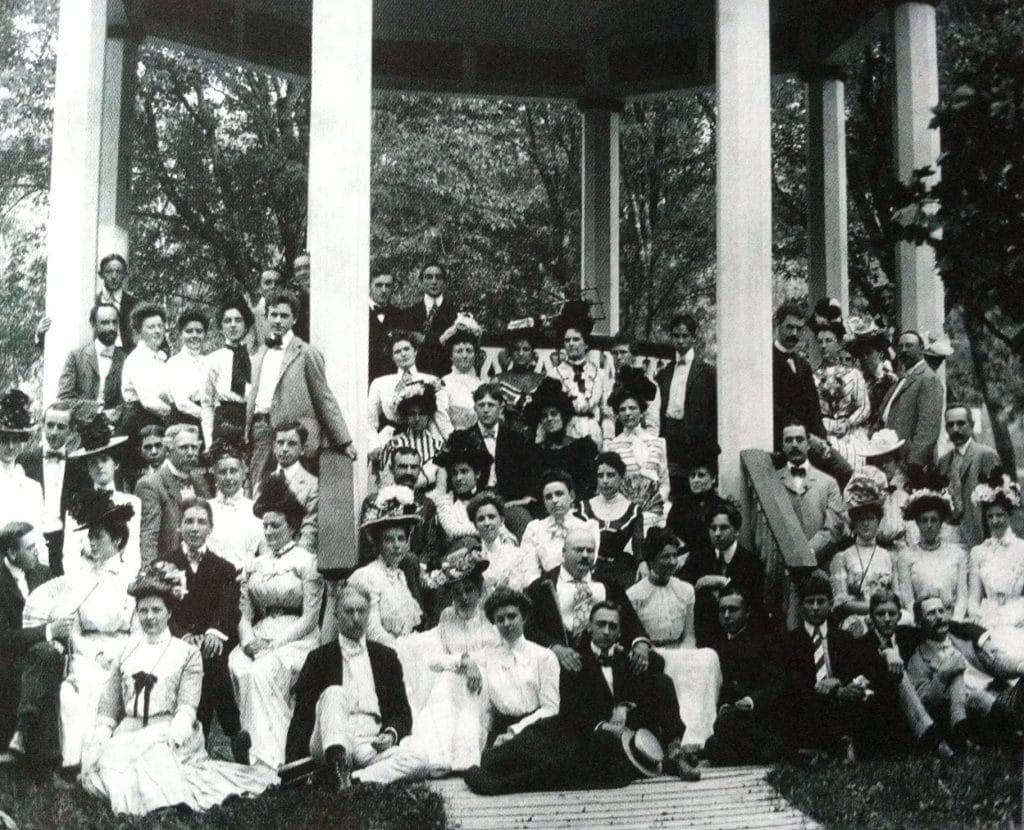 Photo of Guests at the Original Music Pavilion (undated photo)
Photo of Guests at the Original Music Pavilion (undated photo)
-The Hampshire Cottage (2002) was renovated
-“The Story of Our Historic Buildings” was published (2002)
-The Hygeia Bath House and Spa was constructed (2004-06)
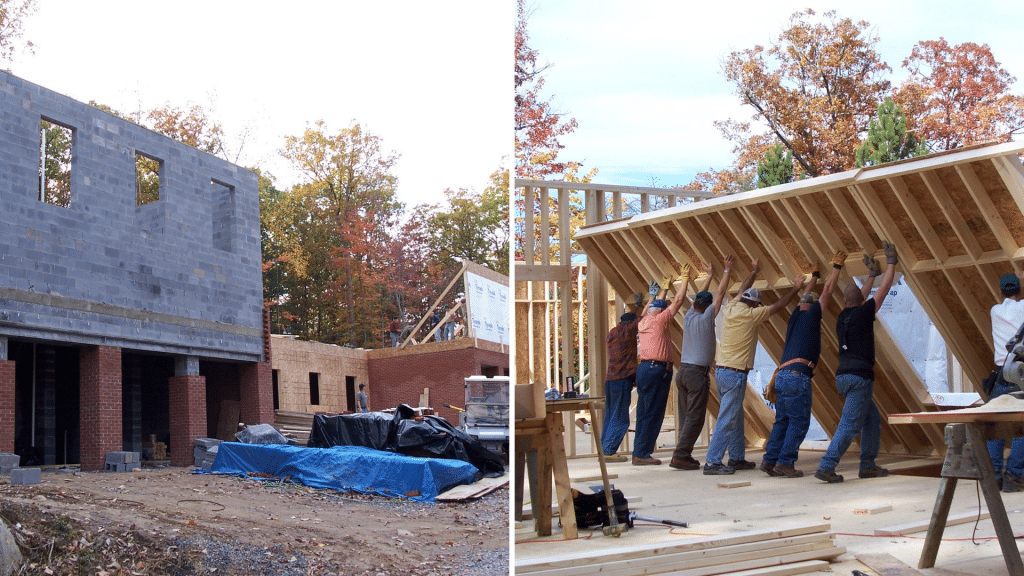 Construction of the Spa
Construction of the Spa
-The sewer system was replaced (2004)
-Both all-weather tennis courts were completely re-surfaced (2006)
-The upper end of the Pavilion was renovated (2007)
-The end of the Meeting House was reconfigured to create a new meeting space named The Mountain House Room (2008)
-Air conditioning was added to the kitchen (2008)
-The Austin Cottage was renovated (2009)
The 2010s:
-Main House Renovation Phase I: elevator and handicapped accessible rooms (2010); Phase II: the Front Desk is moved and enlarged, new Living Room, Library and Card Room are built (2011).
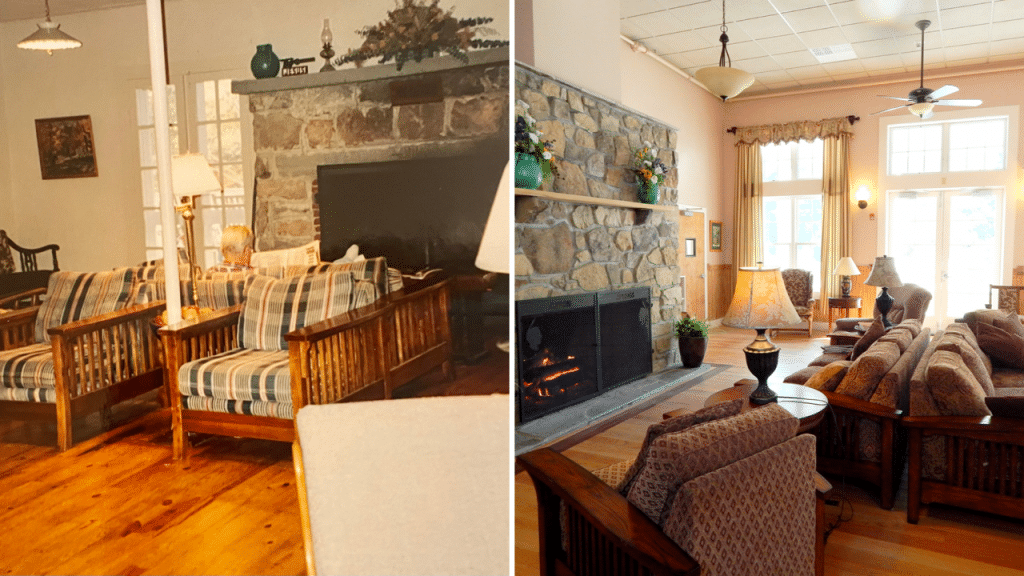 Main House Living Room before and after renovation
Main House Living Room before and after renovation
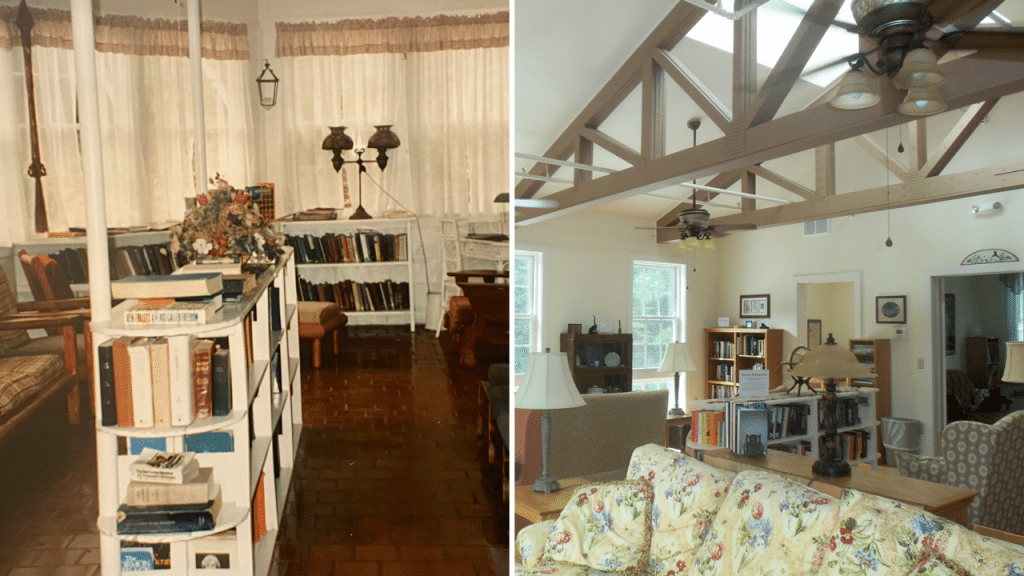 Main House Library before and after renovation
Main House Library before and after renovation
-Air conditioning is added to the Dining Room (2012).
-Capon won Retreat Central’s Best Retreat Center Pool in the U.S. contest.
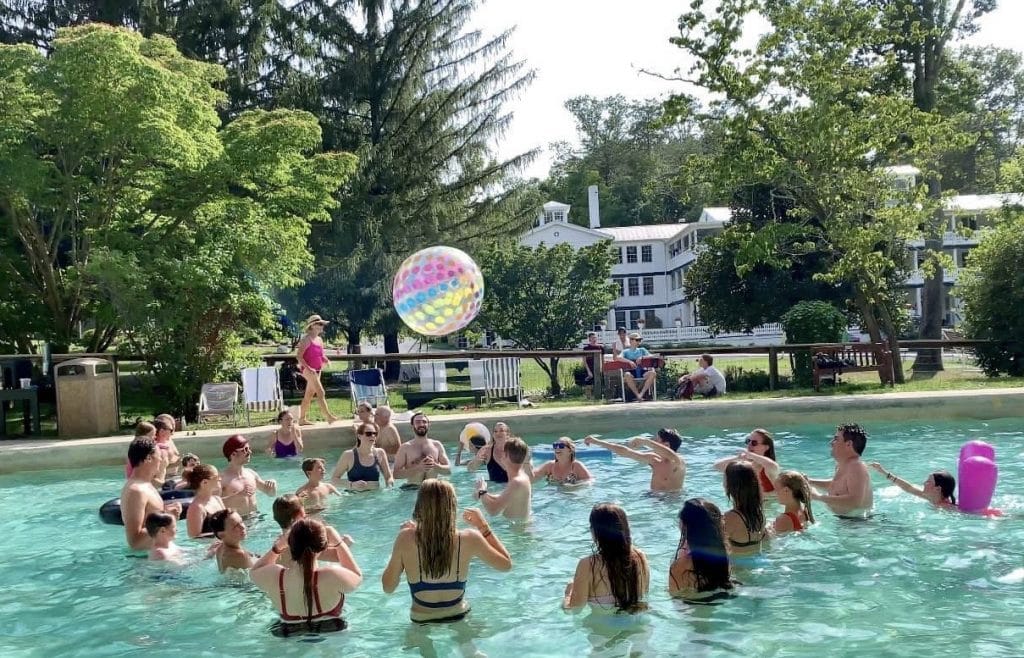
-Capon named West Virginia Family-Owned Business of the year (2013)
-Some 3rd generation Austin family members began to retire; 4th generation brought forth a leadership plan for Capon’s future and the Board of Directors transitioned to six 4th generation family members and two outside Board members; The Guest Council was created.
-Capon was voted Best Family Vacation Spot in 2018, 2019 and 2020 in WV Living Magazine.
-Main House front porch was resurfaced, front steps and stone water fountain were rebuilt.
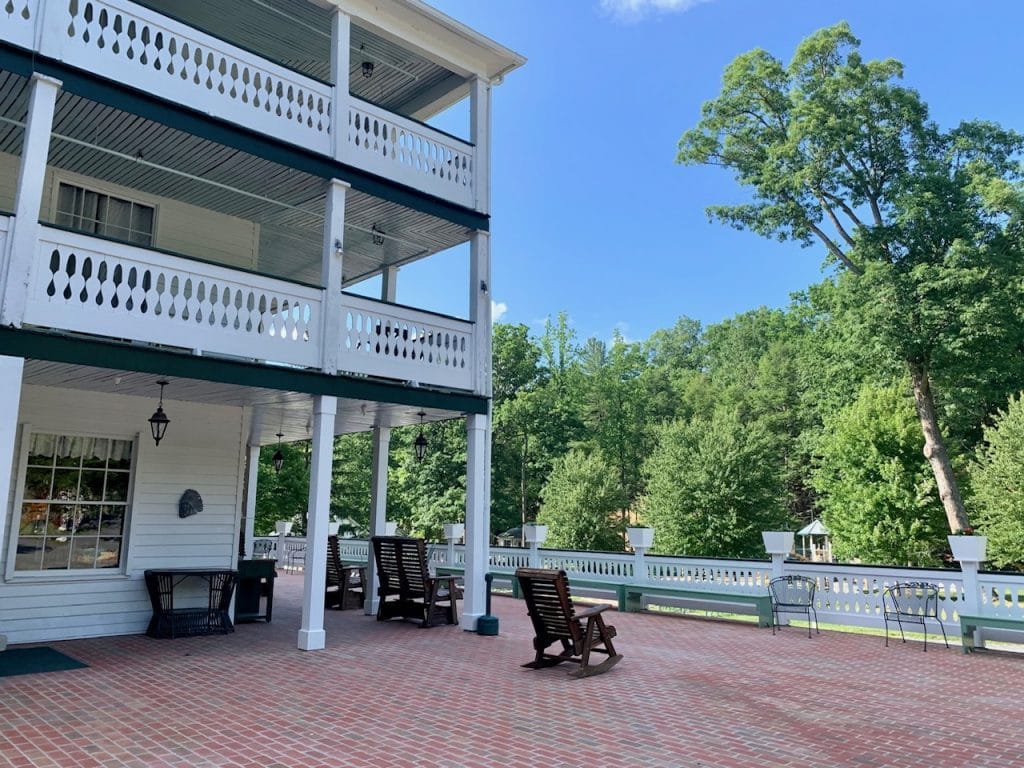
The 2020s:
-The Guest Council created the “Sustainability Fund” to help support Capon financially during the COVID-19 pandemic.
-Work was completed on the Fairfax foundation. Front porch columns and ceilings were replaced and new fans and lights were installed.
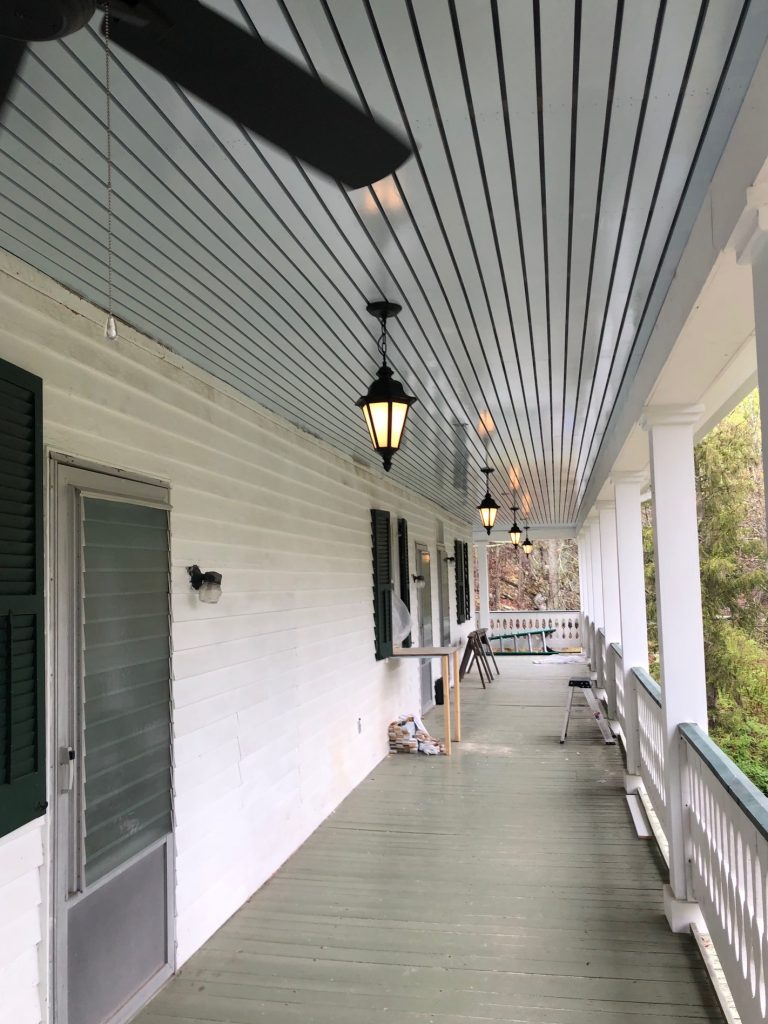
-Water lines were replaced/repaired to allowed Spa to be open during the winter.
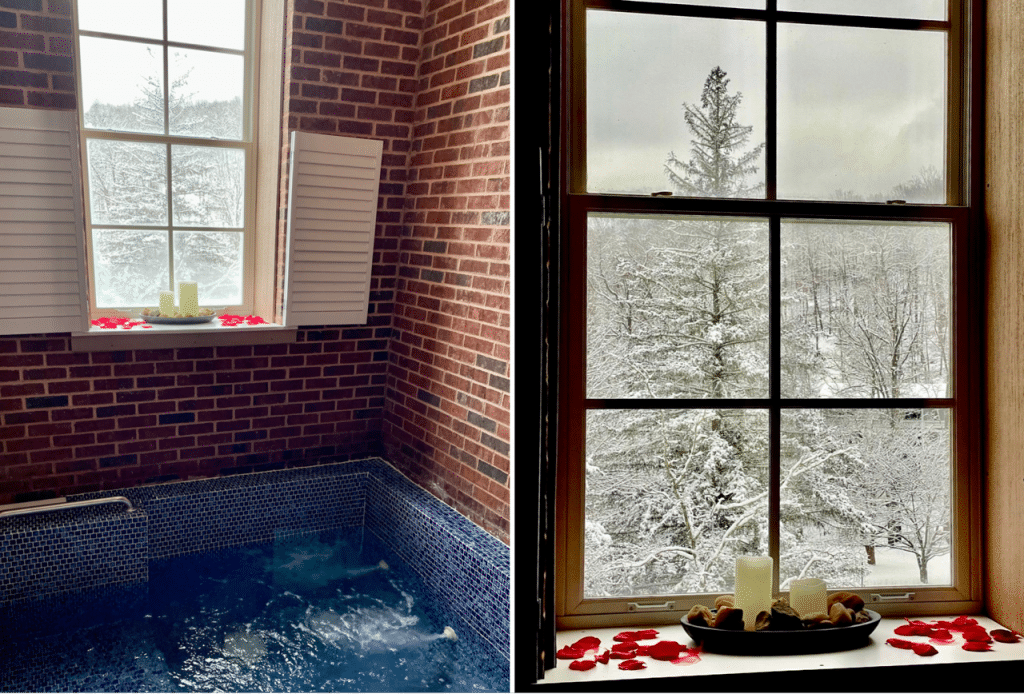
-The Co-Worker Council was formed.
-The President’s Cottage is currently being updated.
Room Availability & Pricing
Stay in one of our 14 wonderful, unique cottages with a variety of accommodations within each one.
Find Your Room
